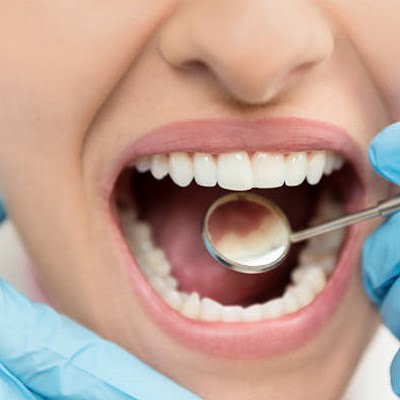
One step in dental repair is to treat a decaying tooth. A cavity or hole is left in the tooth when the dentist removes the decaying area. A dental filling will be used to repair the tooth’s surface, level it out, and restore its natural appearance. Additionally, fillings can be utilized to restore teeth that have been worn down by usage or that have cracks or breaks such as from nail-biting or tooth grinding. This blog will address What You Should Know About The Different Types Of Dental Fillings.
Materials used for Dental Fillings:
Materials used for dental fillings include:
- Gold
- Porcelain
- amalgamated silver (contains mercury mixed with silver, tin, zinc, and copper).
- Composite resin fillings are composed of tooth-colored plastic and glass.
The kind of filling that will best meet your needs depends on the location and severity of the decay, the cost of the filling material, your insurance coverage, and the dentist’s suggestion.
The Procedure of Dental Filling:
Depending on where the filling is and what materials are being utilized, the stages may change. However, these are the general steps:
- The gums are given numbing gel by the dentist. Anaesthesia is given.
- The dentist removes the tooth’s decaying portion using a drill or other specialized equipment.
- The tooth’s gap is then filled.
- Finally, they polish the filling and could make any necessary adjustments to ensure that the person’s bite feels natural.
The dentist must use a special light to “cure,” or harden, composite filling materials.
How to Choose the Right Type of Dental Filling:
Tooth decay is still a major issue for many children and adults all over the globe, despite improvements in oral cleanliness and care. Tooth decay can result in more severe oral health issues, such as abscessed and failing teeth if it is not thoroughly and promptly addressed. This is why it’s crucial to go to the dentist regularly (often every six months for both children and adults) so that he or she can look for indications of tooth decay and other dental health issues.
Types of Fillings:
Various kinds of fillings exist, such as:
Silver Amalgam fillings:
Amalgam is a mixture of silver, copper, tin, and other metals, including mercury, cadmium, and mercuric sulphate. For the back molars, these fillings might be more suitable. It is made of long-lasting, sturdy material.
Composite fillings:
Fillings made of resin and glass are called composite materials because they are tooth-colored. The materials plastic and resin are used to make composite fillings. The material is inserted into the tooth while it is still soft, and then it is hardened under a strong curing light. Because it can be made to match the colour of the patient’s natural teeth. It is a popular choice because it is less obvious than a silver amalgam filling.
Glass ionomer fillings:
Fillings are constructed of glass ionomer, a powdered form of glass that is also tooth-colored and adheres to teeth. In order to assist stop additional tooth decay, these fillings emit fluoride.
Gold fillings:
A mixture of copper, gold and other metals make up the gold fillings. With a 20-year or longer lifespan, these fillings are the strongest.
Ceramic Fillings:
It is both strong and aesthetically pleasing because it is made of porcelain. Costing more than conventional fillings, ceramic fillings are tooth-colored and outperform composite resin in terms of stain and abrasion resistance.
Because the ceramic filling is more fragile than composite, it must be applied to big voids to prevent fracture. This is a disadvantage of utilizing ceramic filling over composite. To make room for the additional bulk, the dentist can widen the area.
Indirect Fillings:
Indirect fillings resemble composite or tooth-colored fillings, with the exception that they are manufactured in a dental laboratory and need two visits before being inserted. When there is insufficient dental structure to support a filling but the damage is not severe enough to require a crown, indirect fillings may be an option.
Once more, the ideal person to guide your decision regarding the material to choose for your dental fillings is your dentist. Speak with your dentist right away if you have any more queries regarding any of these fillings.
Cost of Dental Fillings:
The cost of Dental Fillings in Islamabad may vary depending on different factors. Due to the fact that no two patients have the same problems, it also varies from candidate to candidate. These surgeries are dental ones, though, and no insurance provider will pay for them.
You should always inquire about the cost of the treatment if you wish to receive it. With effective dental operations, our clinic, SKN Cosmetics, offers affordable price ranges. Consequently, pick your surgeon and clinic
Talk it Over With Your Dentist:
The ideal dental fillings for your mouth depend on the state of your teeth, your preferences, and other considerations; there is no right or wrong answer for everyone. The expert staff at SKN Cosmetic Surgery Clinic Islamabad is ready to assist you in weighing your options and choosing the best course of action for using dental fillings to restore the health of your teeth. To reserve your initial appointment and safeguard your teeth, call us directly or fill out the form given below.









